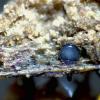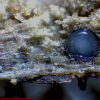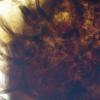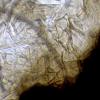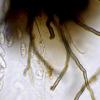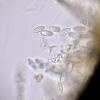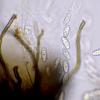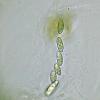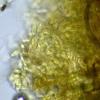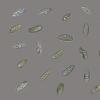
21-12-2025 09:32
Hello.A tiny ascomycete found embedded in wood in

21-12-2025 21:32
Pol DebaenstHello, Garden, Burgweg 19, Veurne, BelgiumOn 10/1

22-12-2025 23:38
Patrice TANCHAUDBonsoir, récolte sur un mur en pierre, apothéci

22-12-2025 00:47
Patrice TANCHAUDBonsoir, récolte à proximité du milieu dunaire

21-12-2025 21:40
Isabelle CharissouBonjour, j'aimerais connaitre les références de

21-12-2025 21:31
Pol DebaenstHello, Garden, Burgweg 19, Veurne, BelgiumOn 10/1

21-12-2025 21:31
Pol DebaenstHello, Garden, Burgweg 19, Veurne, BelgiumOn 10/1

20-12-2025 23:08
Patrice TANCHAUDBonsoir, récolte sur sol sablonneux dans l'arri�
Spherical Pyrenomycete
Josep Torres,
21-12-2025 09:32
A tiny ascomycete found embedded in wood in a very advanced state of decomposition, appearing beneath some specimens of Hemitrichia clavata.
Spherical ascoma with a blackish, globose-angular wall, from which highly pigmented rhizomorphs with few septa sprout.
Octosporous asci with a small apical apparatus resembling two dots. Paraphyses very scarce to practically absent; the few observed are filiform and septate.
Cylindrical-ellipsoidal ascospores, completely filled with guttules, inamyloid, and with the following measurements in water:
(13.4) 13.7 - 16 (16.7) × (5.3) 5.5 - 6.4 (7) µm
Q = (1.9) 2.2 - 2.7 (3) ; N = 21
Me = 14.8 × 6.1 µm ; Qe = 2.4
I admit that I am completely lost this time.
Any opinions from you would be greatly appreciated.
Thank you very much in advance.
Best regards.
Alain GARDIENNET,
22-12-2025 09:53
Re : Spherical Pyrenomycete
Hi Josep,
It reminds me fungi such Torrentispora fibrosa. But it's different (see for example apical apparatus). It's only to star helping you.
Surely a fungus for Martina Reblova.
Alain
It reminds me fungi such Torrentispora fibrosa. But it's different (see for example apical apparatus). It's only to star helping you.
Surely a fungus for Martina Reblova.
Alain
Albert Ibars,
23-12-2025 03:22

Re : Spherical Pyrenomycete
Hello,
I think this is Helminthosphaeria sp., most likely H. corticiorum.
The structures described as rhizomorphs look to me more like melanized conidiophores.
In Helminthosphaeria, an association of the teleomorph with a Diplococcium-like anamorph has been documented, which would fit well here.
Regards,
Albert
I think this is Helminthosphaeria sp., most likely H. corticiorum.
The structures described as rhizomorphs look to me more like melanized conidiophores.
In Helminthosphaeria, an association of the teleomorph with a Diplococcium-like anamorph has been documented, which would fit well here.
Regards,
Albert


